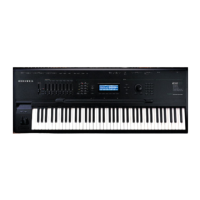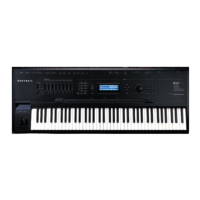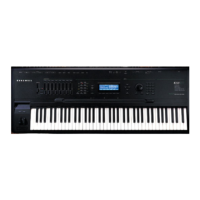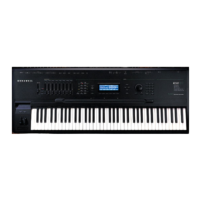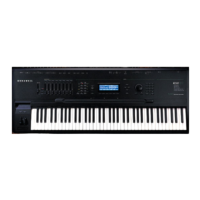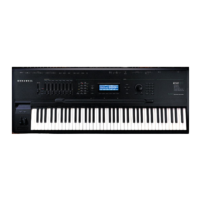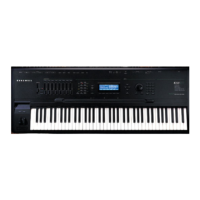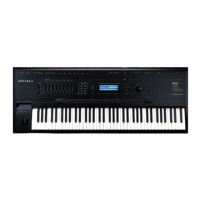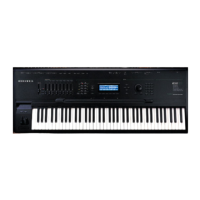Disk Mode
Saving Files
13-26
auditioned from this page become the Current Song (as seen on the Song Mode
page).
Once auditioned, the above object types remain active on the keyboard until another object is
auditioned, or Cancel is pressed. If a song is being auditioned, no other objects are auditioned
until the song audition is stopped (by pressing one of the Left or Right cursor buttons).
Saving Dependent Objects
When you save a file, you may see a prompt as part of the Save dialog that asks you whether
you want to save dependent objects. A dependent object is simply an object that’s associated
with another object. The dependent object can be stored in a different memory bank, for
example, a RAM sample with ID 301 that’s used in a program with ID 402, or in the same bank
as the file being saved. Rather than forcing you to save dependent objects separately and to
keep track of them yourself, the K2500 gives you the option of automatically saving the
dependent objects as part of the file you save. When you load the file again, the dependent
objects will be loaded along with the objects to which they’re attached.
There are a few things to keep in mind regarding dependent objects. First, it’s not uncommon
for RAM samples to be dependent objects, and they can take up quite a bit of memory. If you
save a RAM sample as a dependent object when you save a bank of programs to disk, you may
create files which won’t fit onto a 720K or 1.4M floppy disk. Since the K2500 can’t format floppy
disks in the middle of a save operation, you should have spare formatted disks ready to go
before you start saving. See the section called “Split Files” on page 13-23.
While the K2500 makes it easy for you to keep track of your dependent objects, you need to
keep aware of what happens with dependent objects when saving to disk and reloading.
Consider this example. Suppose you create 30 new programs, each of which uses a keymap
containing four different RAM samples. If you save these programs to a disk file, and save
dependent objects with them, you’ve created a file containing 30 programs and 120 dependent
RAM samples. So far, so good. Suppose you then load that file into the 300s bank. The K2500
will load the 30 programs into the 300s bank just fine, but it will be able to load (at most) only
the first 100 dependent objects to the 300s bank (each memory bank can hold a maximum of 100
objects of a given type). The remaining 20 dependent objects will be loaded into the 400s bank.
If there are no objects of the same type in the 400s bank, there’s no problem. But if there are
objects of the same type in the 400s bank, some or all of them will be replaced by the newly
loaded dependent objects.
The easiest way to prevent this is to make sure that you don’t create more than 100 dependent
objects attached to the other objects in a given memory bank. The easiest way to do this is to
avoid creating dependent objects when possible, by saving objects with IDs in the same
memory bank as the objects to which they’re related. For example, if you create a program that
uses RAM samples, and you save the program with ID 201, resaving the RAM samples used by
that program with IDs in the 200s will prevent dependent objects from being created for that
program. If you do this, you’ll minimize the number of dependent objects you create, and
you’ll be unlikely to force dependent objects to be loaded into a higher-numbered memory
bank when you load files.
Once you have selected objects for saving (either individually as just described or by bank
selection), the K2500 will determine if any of the items chosen to save have any dependent
objects in RAM that were not chosen. For instance, if you select a program to be saved and
nothing else (using the Save Object feature), the program may have dependent effects,
keymaps, and samples that are in RAM. Dependent objects that are in ROM (i.e., ROM
samples or keymaps) do not get saved to disk.
You will see the following dialog displayed if there are any dependent objects in RAM of any
objects that were selected for saving:
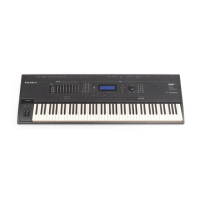
